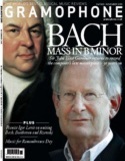Texte paru dans: / Appeared in:
Harmonia Mundi
|
|
|
Outil de traduction (Très approximatif) |
|
|
Reviewer: David Vickers
On the evening of February 23, 1653, the Ballet Royal de la Nuit was performed at the Louvre for the 15-year-old Louis XIV, who had recently stabilised his unsteady position on the throne after the Fronde civil wars. The lavish entertainment was organised by the poet Isaac de Bensérade into four parts described as veilles (‘watches’), each representing a period of the night; it culminated in a grand ballet during which the young king himself danced as Apollo (ie the Sun King) banishing the spectre of gloomy night as dawn arrived – a political allegory for the crushing of the rebellion which nobody could have misunderstood.
Sébastien Daucé has designed a selective exposition of the musical dimension of the multifaceted Ballet de la Nuit. Vocal music by Jean de Cambefort includes a spellbinding solo for Night that begins the first veille (the alto soloist Lucile Richardot is accompanied sensuously by a consort of viols) and a hushed dialogue for Sleep and
Silence that commences the fourth veille (sung delicately by bass Etienne Bazola and soprano Caroline Bardot). Ensemble Correspondances play about two-thirds of the original 1653 dances, reconstructed expertly by Daucé from a manuscript first violin part copied nearly 40 years after the production. It is likely some instrumental music was written by members of the illustrious Vingt-quatre Violons du Roi, although one wonders if any anonymous bits might be the handiwork of the 20‑year-old Lully (who danced five roles in the Ballet de la Nuit). His future father-in-law Michel Lambert is the composer of a dialogue sung sweetly by three uncredited Graces.
Daucé invokes the privilege of creative licence with the interpolation of numerous extracts from operas by Italians invited to Paris by Cardinal Mazarin during the early years of the Sun King’s reign. The bulk of the third veille is compiled from Cavalli’s Ercole amante (1662) and the fourth veille draws from Rossi’s Orfeo (1647), including a beguiling Passacaille that seamlessly follows on from two lyrical airs by Antoine Boësset. A rotating team of up to 52 musicians traverse the musical spectrum from whispered intimacy to jovial ceremony. My only quibble is that the diverse authorship of the music could have been cited more helpfully in Harmonia Mundi’s libretto instead of the reader having to jump back and forth to abbreviations in the track-listing, but the copiously illustrated hardback book provides plenty of fascinating material to mull over. |
|
|
|
|
|
Cliquez l'un ou l'autre
bouton pour découvrir bien d'autres critiques de CD |
|

/3149020222379.jpg)


